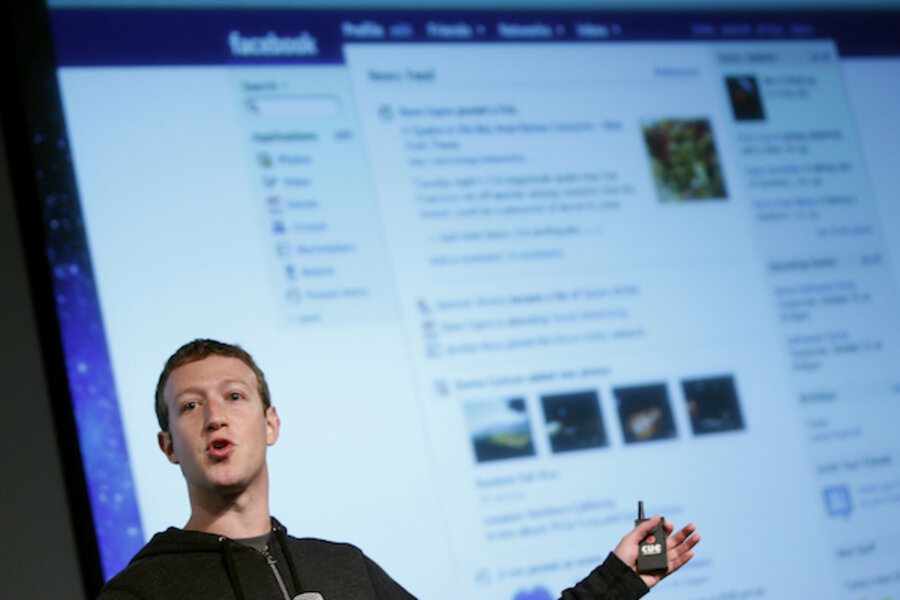Facebook redesign like a 'personalized newspaper,' Zuckerberg says
Loading...
Facebook is getting a face-lift.
At a press conference in Menlo Park, Facebook CEO Mark Zuckerberg said Facebook will immediately begin rolling out a redesign of its News Feed, the centerpiece of the Facebook experience. While the current News Feed revolves largely around text, the new News Feed will incorporate more photos, videos, and graphics.
Ideally, Zuckerberg explained, the feed will become a kind of “personalized newspaper,” where users can “drill down into topic-specific news feeds,” as the New York Times put it. For instance, you can set your preferences to filter in only info from in-platform games, such as FarmVille 2; or you can customize the feed in such a way that it displays only photos from friends.
In addition, you’ll be able to set up multiple feeds, and click back and forth between them.
"The stories around you are intricate and detailed and should be displayed with more than just text," Zuckerberg said, according to Computerworld. "We believe that the best personalized newspaper should have a broad quality of content... socially and locally updated from people around you. A front page or top news or most important news going on across all topics. And the ability to drill down into any topic you want."
Facebook has framed the update as a boon for users. But as Nicholas Carlson of Business Insider notes, the whole thing will be a boon for Facebook and its advertisers, too.
“Gadget advertisers will pay a premium to buy ads on the gadget section of The New York Times. Automotive advertisers will pay a premium to buy ads in the 'autos' section of The New York Times. This is called endemic advertising,” Carlson writes. Facebook is now pursuing a similar strategy, he adds. The “sectioning of the news feed should lead to more endemic advertising for Facebook, and increased ad rates.”
More when we know it. In the meantime, here’s a question for you: What do you think the odds of this redesign stirring up the same kind of user wrath as the 2009 overhaul?





